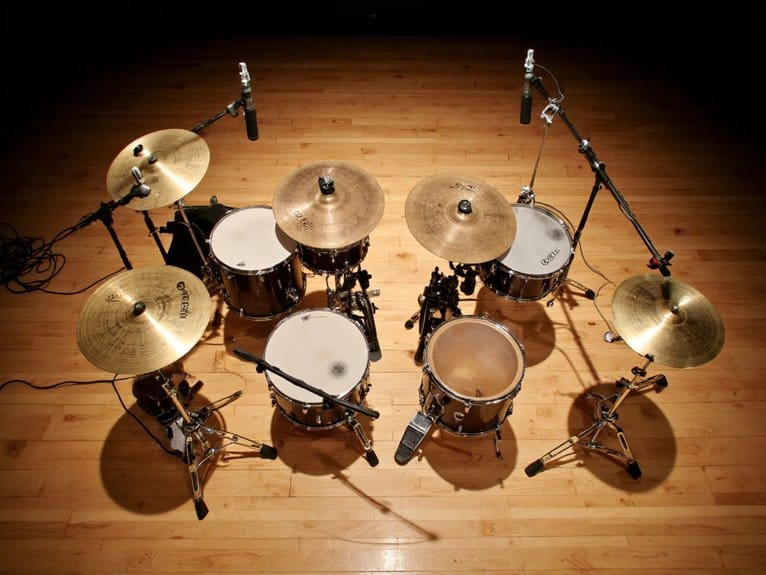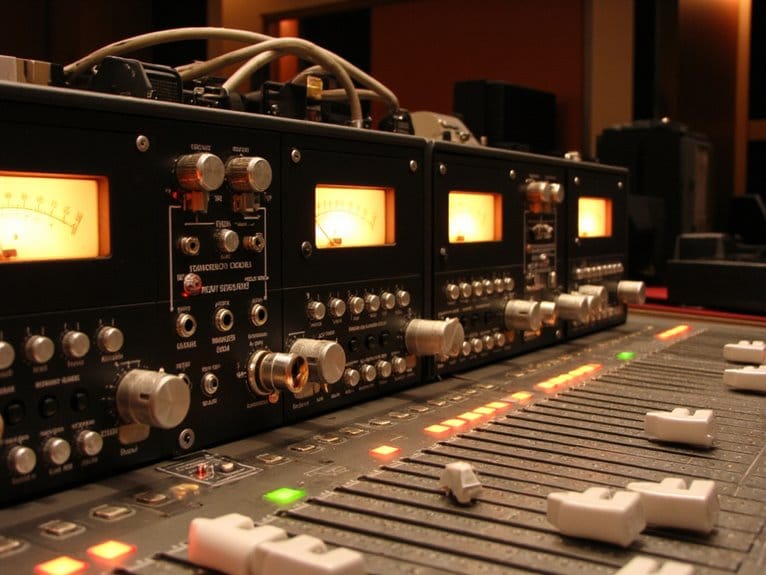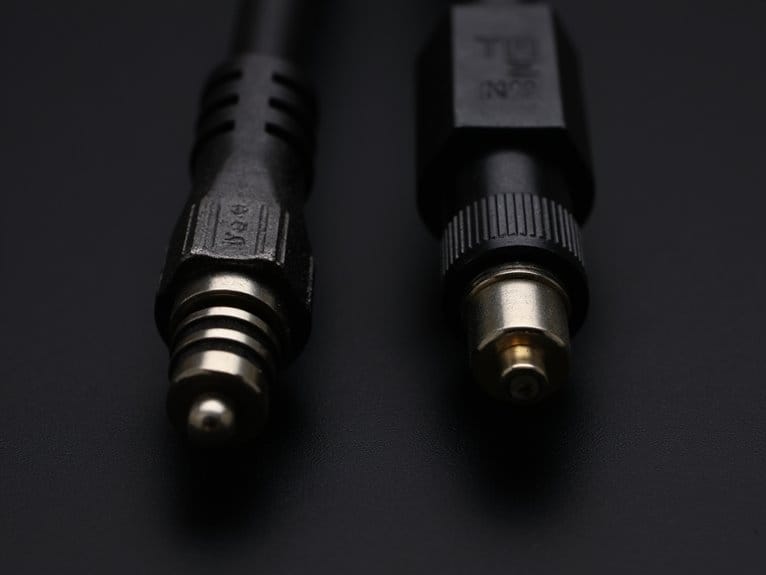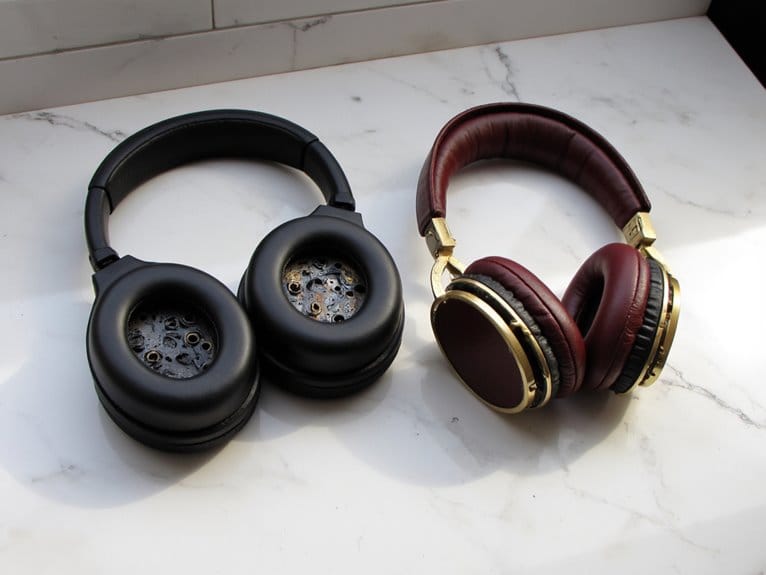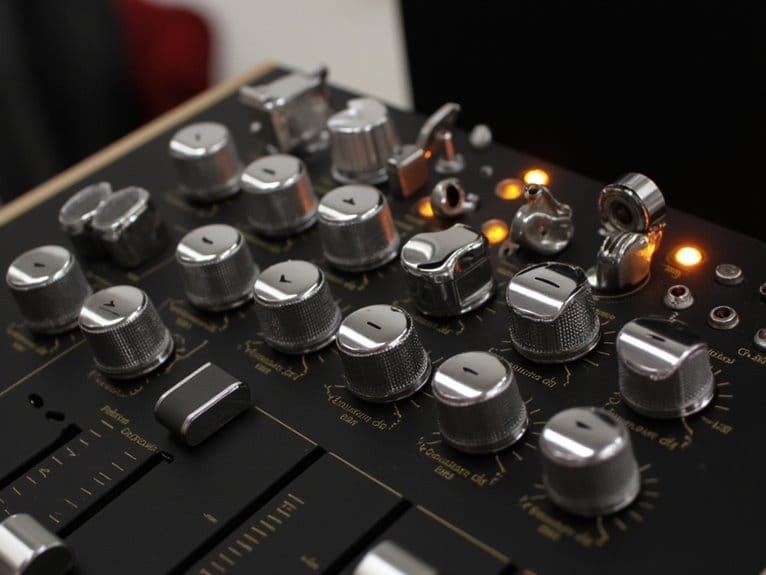Overhead Microphone Techniques: Spaced Pair vs. X/Y
When choosing overhead microphone techniques, you’ll find spaced pairs position mics 16+ inches apart to create expansive stereo imaging through time-of-arrival differences, while X/Y configurations place capsules nearly touching at 90 degrees for focused, mono-compatible sound using intensity differences. Spaced pairs excel in live rooms with natural ambience but suffer phase issues, whereas X/Y suits treated spaces with controlled acoustics and offers superior mono compatibility, though the ideal choice ultimately depends on your specific recording environment and desired sonic characteristics.
We are supported by our audience. When you purchase through links on our site, we may earn an affiliate commission, at no extra cost for you. Learn more.
Notable Insights
- Spaced pair microphones are positioned 16+ inches apart, creating expansive stereo imaging through time-of-arrival differences.
- X/Y configuration places microphone capsules nearly touching at 90 degrees, offering focused sound with excellent mono compatibility.
- Spaced pairs capture more ambient room sound and fuller bass response in reflective, live acoustic environments.
- X/Y configurations provide precise tonal focus with clear highs, making them ideal for treated or dead rooms.
- Phase issues are more problematic with spaced pairs, while X/Y setups maintain superior mono compatibility and minimize cancellations.
Understanding the Two Primary Overhead Microphone Configurations
Two fundamental overhead microphone configurations dominate drum recording practices, and I’ve found that understanding their distinct characteristics can dramatically transform your drum sound from amateur to professional quality.
The spaced pair technique positions two microphones wide apart above your kit, typically 16 inches or more, creating an expansive stereo image that captures room ambiance naturally. However, you’ll need precise mic placement measurements from your snare center to avoid phase issues.
Conversely, X/Y configuration places directional microphones with capsules nearly touching, angled at 90 degrees, producing a focused, mono-compatible sound. While this technique offers excellent phase coherence and requires less complex sensitivity settings, it sacrifices the wider stereo field that spaced pairs deliver effortlessly.
Stereo Imaging and Sound Characteristics Compared
The fundamental difference between these overhead configurations lies in how they create stereo imaging, and I’ve discovered that understanding this distinction will dramatically affect your drum recordings’ spatial characteristics and overall sound quality. Spaced pairs rely on time-of-arrival differences between microphones, creating wider soundstage width through physical spacing that captures more ambient room sound. XY configurations use intensity differences between closely coincident cardioid mics, producing precise tonal focus with narrower stereo imaging that emphasizes direct sound from your drums. When implementing spaced pair technique, following the 3:1 rule becomes essential to minimize phase cancellation issues that could compromise your recording quality.
| Characteristic | Spaced Pair | XY Configuration |
|---|---|---|
| Stereo Width | Wide, spacious | Narrow, focused |
| Ambient Capture | High room ambience | Minimal room sound |
| Mono Compatibility | Poor (phase issues) | Excellent (coincident) |
| Tonal Balance | Fuller bass response | Clear, detailed highs |
Choosing the Right Technique for Your Recording Environment
Knowing these stereo imaging differences becomes meaningless if you can’t match the right technique to your specific recording space, and I’ve learned through countless sessions that your room’s acoustic properties should be the primary factor driving this decision.
Room considerations dictate whether you’ll benefit from the natural ambience that spaced pairs capture in live rooms, or the controlled directness that XY provides in treated spaces.
Dead rooms favor XY’s coincident design since there’s minimal reverberation to enhance your stereo image anyway, while highly reflective environments let spaced pairs shine by leveraging room acoustics. Proper acoustic treatment enhances microphone performance by reducing unwanted reflections and noise, making it crucial for condenser microphones which require optimal acoustic environments.
However, you must weigh phase issues carefully-XY offers superior mono compatibility, whereas spaced pairs can introduce problematic cancellations when summed, particularly in acoustically challenging spaces. When using spaced pairs, always audition in mono to verify proper placement and avoid unwanted comb filtering effects.
Professional overhead recording requires maintaining an ideal distance for optimal sound pickup, as positioning affects both stereo imaging precision and the capture of room acoustics. For optimal results, implement real-time monitoring to assess your stereo image and make immediate adjustments during recording sessions.
On a final note
You’ll find that both spaced pair and X/Y configurations offer distinct advantages, and honestly, I’ve learned that your choice shouldn’t be driven by trends or what other engineers prefer. Consider your room’s acoustics, the ensemble size, and your desired stereo width when making this decision. While spaced pairs deliver broader imaging with potential phase issues, X/Y setups provide focused, mono-compatible results that’ll serve you well in most professional contexts.

